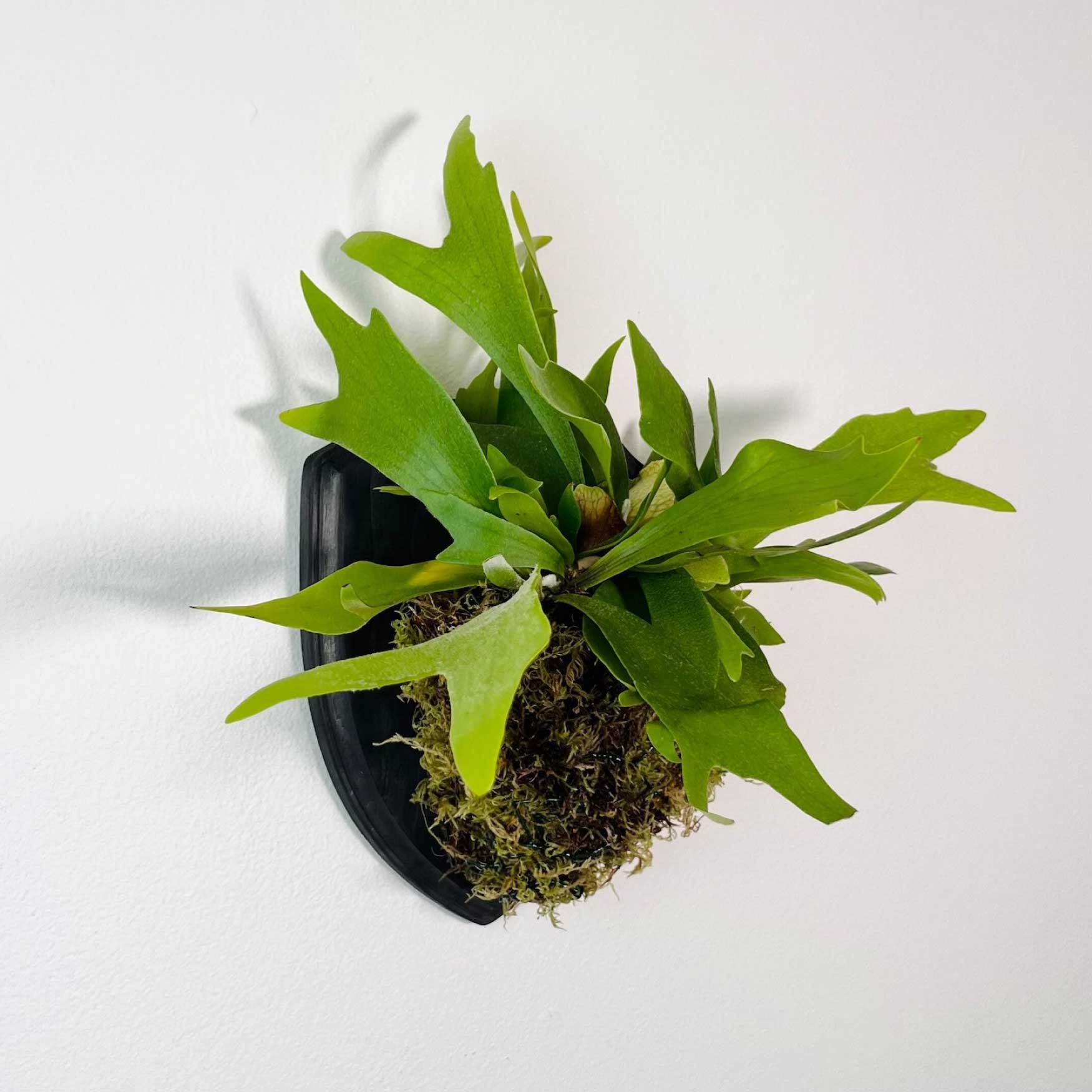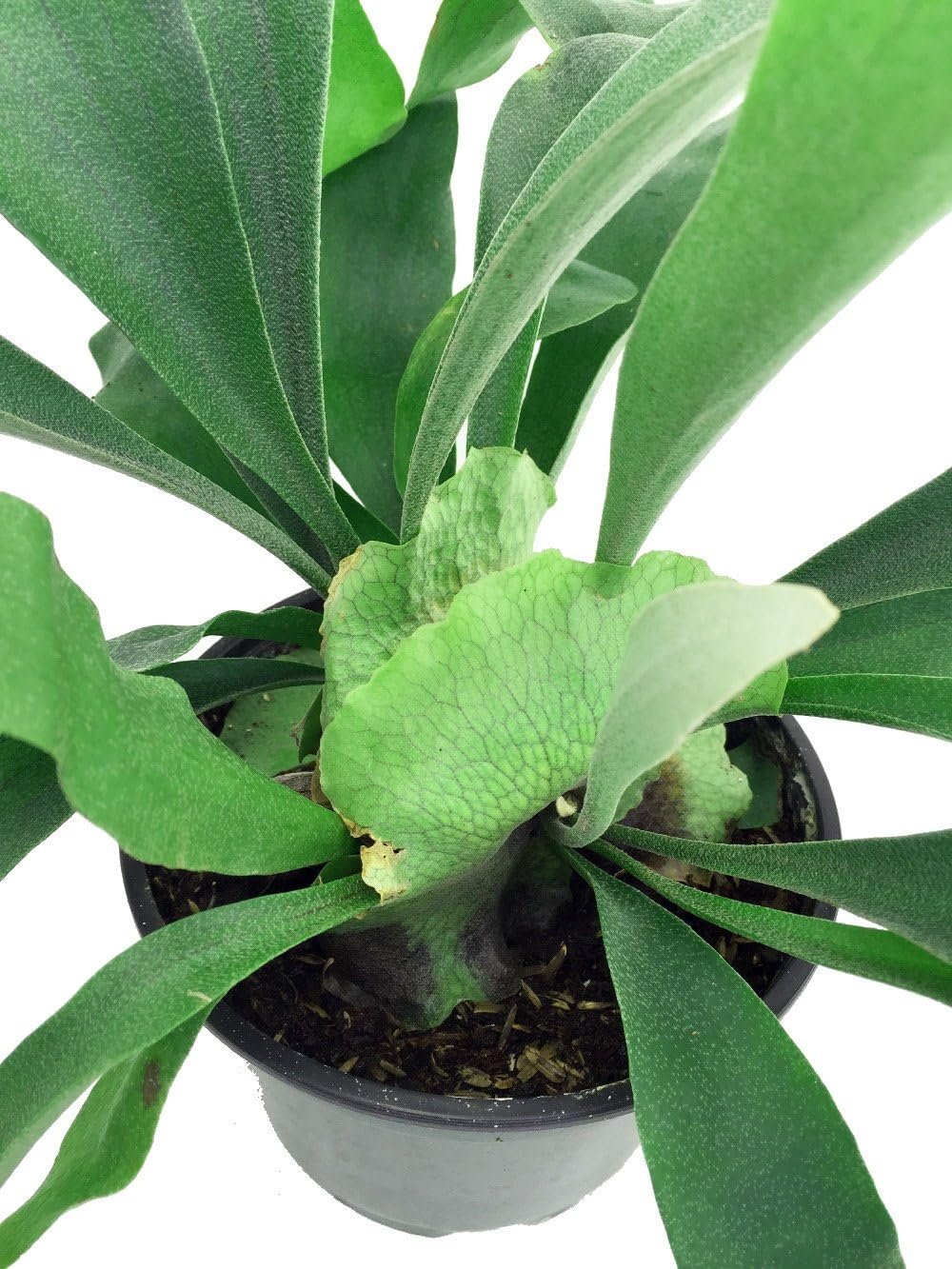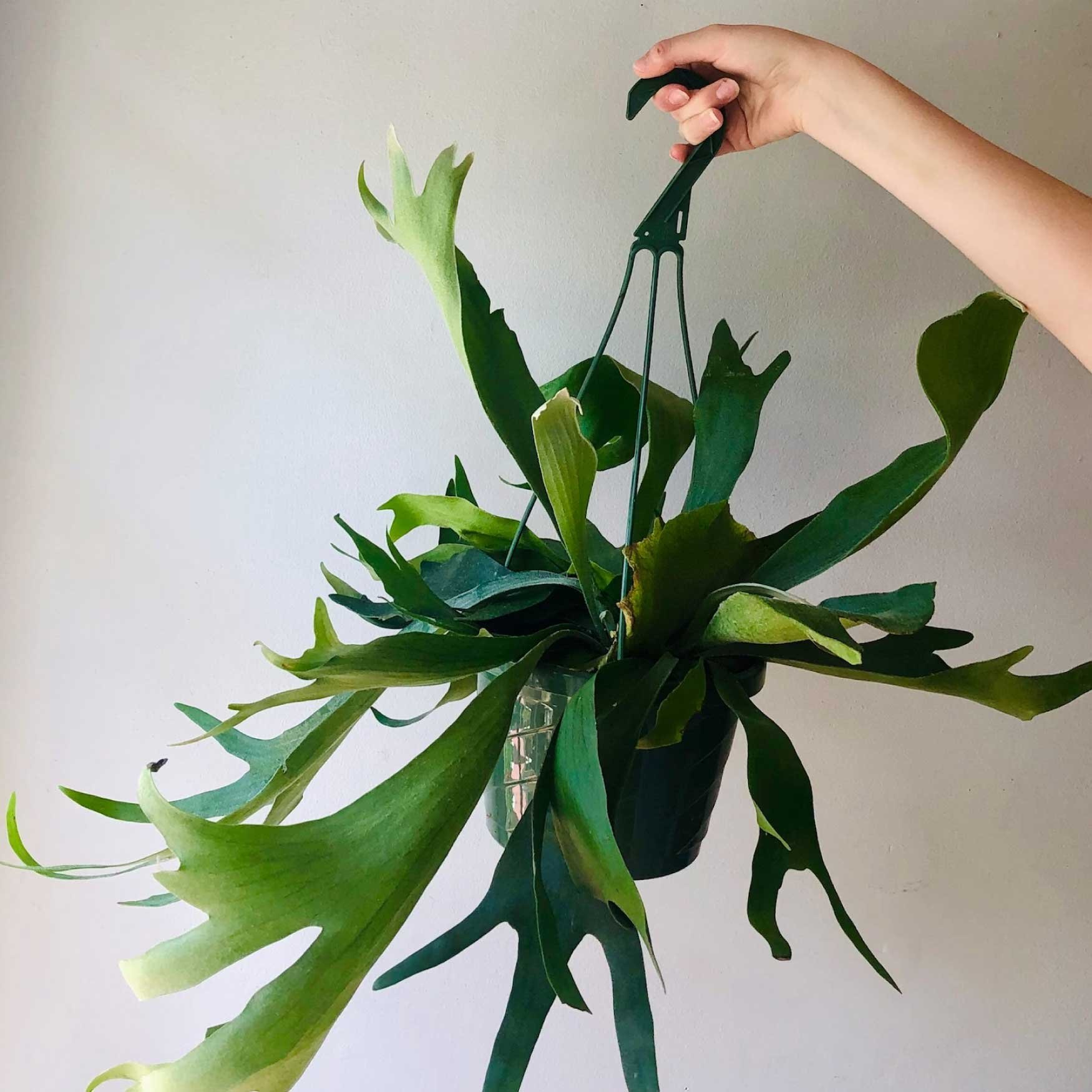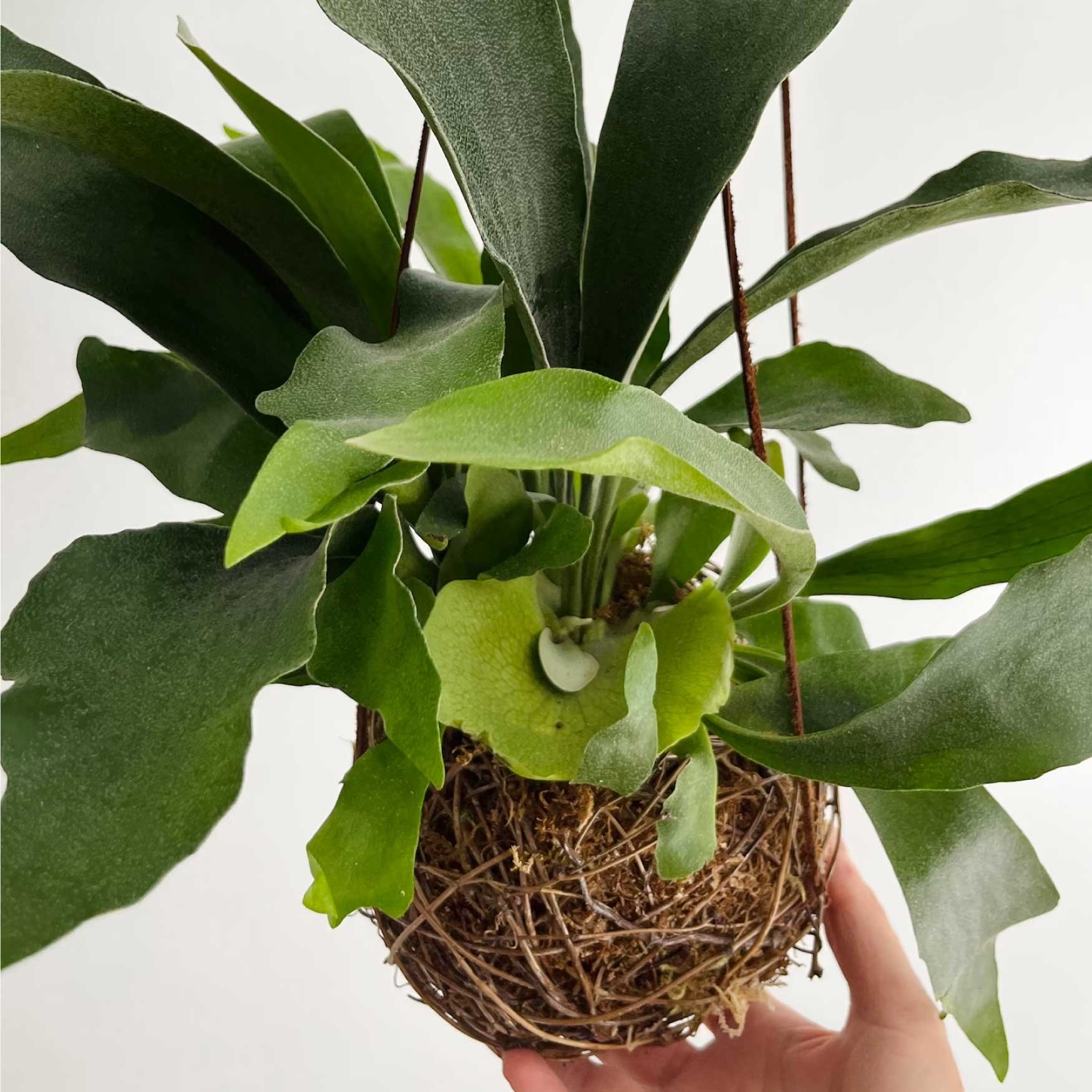Care Guide for the Staghorn Fern
As an Amazon and Etsy Associate I earn from qualifying purchases.
About the Staghorn Fern
Staghorn Ferns are eye-catching and unusual plants, not just because their leaves look like deer or elk antlers, but they similarly can be mounted on wood to make for a way to add greenery to your room or gallery wall. While these ferns can be difficult to grow, their uniqueness and wider availability make them very popular for growers looking to add some variety to their houseplant collection and decor.
Native to Oceania and Asia, they are in the Polypodiaceae family. Staghorn Ferns are ephiphytic meaning they grow on other plants, mainly trees, using aerial roots to attach. When you buy Staghorn Ferns in stores they are most likely potted in soil. This isn't necessarily wrong and they can continue to live that way happily as many epiphytes do in households, but using a moss method is preferred for these plants.
Recreating their native sub-tropical conditions is vital to helping the Staghorn thrive. High humidity and dappled sunlight are a must. They are slow-growing plants but can reach massive sizes and, if you live in a warm, humid climate, would be happy hanging outside on your porch but remember to bring it inside during winter. Please do remember that these are invasive species so do not plant them outdoors but keep them mounted in a contained space.
Staghorns have two different types of leaves: shield and antler fronds. The shields are normally brown and rounded around the root ball to protect it. It may feel natural to remove brown, crispy leaves from a plant but these should be left alone as they are protecting the rootball and absorbing nutrients. Antler fronds are green and project out from the base and can reach a few feet in length indoors while outside they can reach massive sizes.
How to Care for your Staghorn Fern
SOIL & MOUNTING: Young plants may be started in a potting mixture that is kept moist but as they get older they should be switched to a mount. I have a DIY on how to mount your Staghorn. I go into the steps but also tips and tricks for choosing your wood and correct plant placement.
TEMPERATURE: This fern can handle high heat and in fact enjoys a hot, muggy environment. Keep your range around 50-100 degrees Fahrenheit. If you are keeping your plant outside during the summer remember to bring it inside for winter. Avoid drafty windows and AC units.
LIGHT: Recreating the Staghorn Ferns environment will yield the best results. Since it grows in the wild on trees it receives dappled sunlight, mainly shaded from the sun. Avoid placement in direct sun as it can burn the fronds. Consistent, shaded light is important. This does not mean a lightless room but instead placing it above or to the side of a window. I recommend north light as it is very mild as is morning sun from the east.
HUMIDITY: Perhaps the most important thing you can provide for a Staghorn Fern is infinite humidity. As a result, these thrive in bathrooms, laundry rooms, and kitchens especially if you live in a dry climate. It doesn't hurt to assist it with a daily misting, I recommend this continuous mister, or a humidifier in the room.
WATER: Mounting makes these interesting to water. Remove it from the wall (or you will create a mess) and place it in a sink or shower. Soak the moss root ball for 10 minutes until saturated. Allow to drip dry before hanging again. In the summer water once a week, letting the root ball dry out. In the winter water every 2-3 weeks. If you notice the fronds have started to brown at the base it is likely being overwatered. If the tips turn brown then it likely needs to be watered more.
FERTILIZER: Once a month during the growing season fertilize your Staghorn Fern. I recommend a liquid fertilizer.
Common Questions
REPOTTING: Remounting your Staghorn Fern can become necessary. If it still fits on your board then create a fresh moss/peat ball around the roots and reattach to the board. If it is too big you may need a larger board to mount it on to support the weight and size.
PROPAGATION: Staghorn Ferns can be propagated by division.
- Only use a large, mature Staghorn that can be easily divided into sections that include a shield front and some roots.
- Plant each section into a compost and peat mixture.
- Keep these babies in high humidity and the soil moist. You can cover the plantings with a see-through plastic cover or glass dome to up the moisture.
- These can take a while to root and may fail. Don't be discouraged! It is best to propagate during the growing season as that is your best chance of success.
PESTS & DISEASES: These are relatively pest-free plants but can get aphids, mealybugs, or spider mites, especially if you have other plants in your home infected. However, fungus can occur from too much humidity or traveling spores. This will appear as black spots on the fronds. To treat all of these, use neem oil.
PETS: This is non-toxic for pets.
These might not look like any Fern you have ever had but Staghorn Ferns still have those characteristic gorgeous leaves. While it might not be the easiest to care for, it is worth the effort. Having a plant that can also serve as a piece of wall art is unique and fun. Tag me on Instagram with your Fern babies @thegreenmadhouse and let me know if you have any questions below.
























